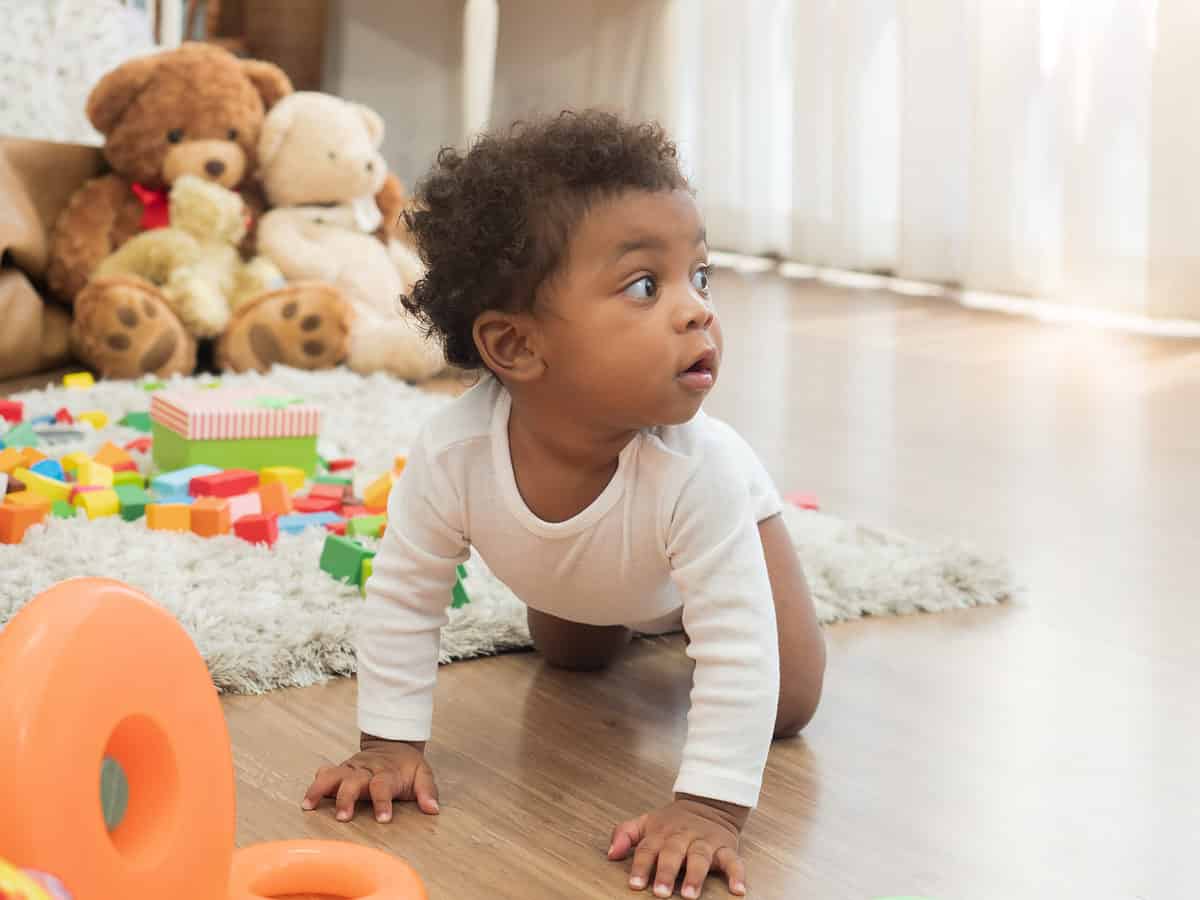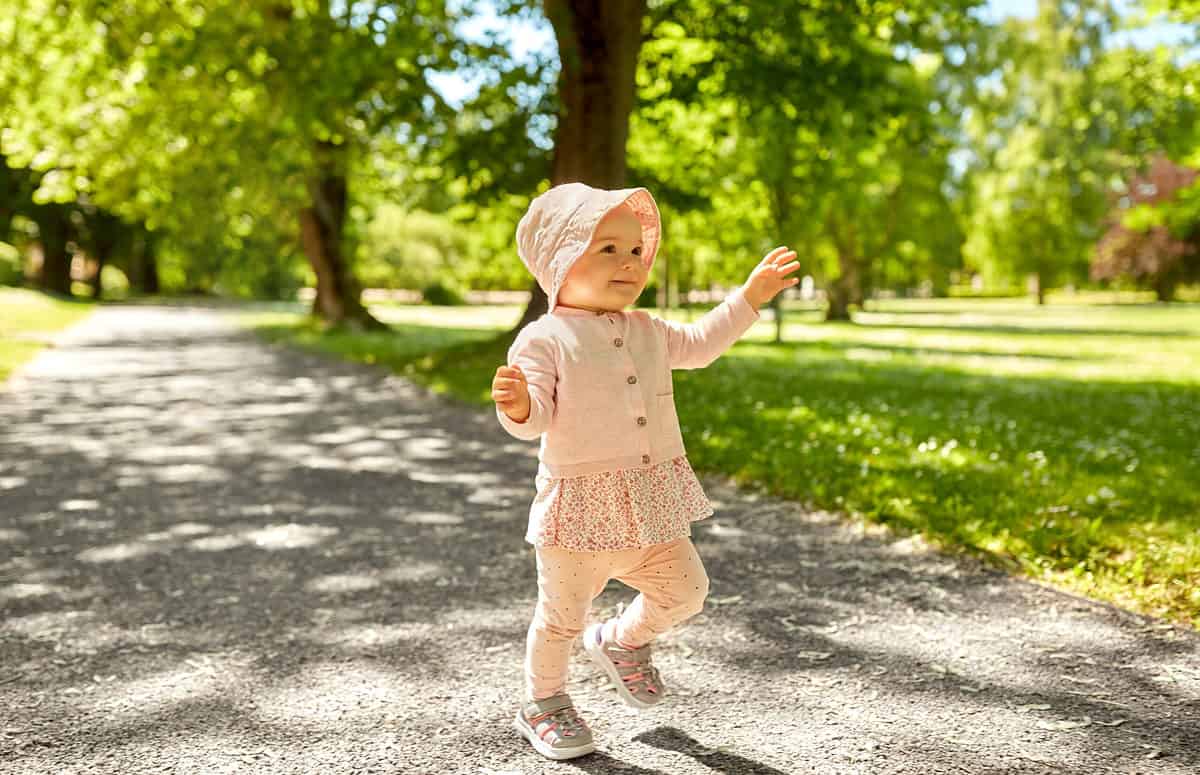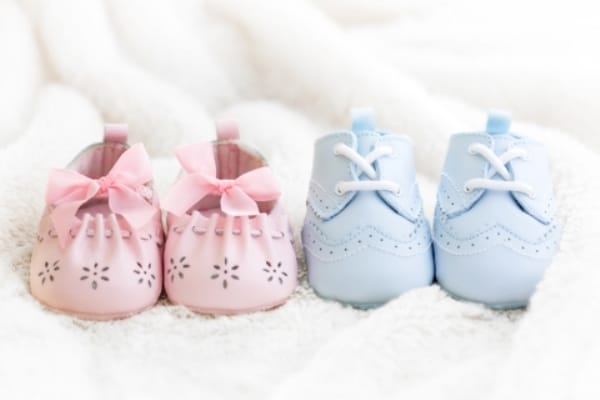Key Points of a Babies Foot Development
- Most babies won't require shoes for about the first year and a half of their lives.
- Most babies will start learning to walk and develop their balance around 9-16 months. Being barefoot is beneficial during this time.
- Toddlers size up in shoes about every 2-3 months, so be prepared to make several shopping trips.
Your little one is here and you’ve stumbled into the rabbit hole of baby clothes and footwear options, but when should your baby start wearing shoes? According to the National Health Service, babies don’t technically need to wear any kind of hard-soled shoe until they’re around the age of walking (somewhere between 8-18 months).
Shoes can damage the natural growth of a newborn’s foot bones and restrict natural movement. Human babies are born with around 300 bones in their skeletal structure. These bones fuse and shift over time so that adults have fewer bones than babies once they are fully matured. The bones in feet and legs develop as a baby is learning to walk and therefore hard-soled shoes can adversely affect the natural process. So what are the best times to start introducing footwear to your child?
When it comes to shoes, there are lots of soft booties, grip socks, and hard sole options. Some options provide more warmth over style and it can be important to know what shoe might be the best fit for your child’s developmental age. Keep reading for a timeline of developmental markers that will help you to pick the best shoe option based on the age of your child.
Developmental Markers
0-2 Months
Your baby’s legs will stretch when held. They start to respond when held in a standing position, touching the ground and bearing weight briefly. In the early stages, try to buy soft-soled and knit footwear options. Use these for warmth and perhaps to go with a particular outfit, but pick out options that are soft and malleable for the baby’s growing foot and leg muscles.
According to Romper.com, like adults, when babies are cold, their body heat goes to their core. In these cases, their extremities can get very cold and in chilly weather, a pair of soft, fuzzy booties might be just the thing for keeping your baby cozy and healthy. Some good options for fuzzy booties include the Ugg Baby Bixbee Ankle Boot and the Hudson Baby Unisex Fleece Booties, both available on Amazon.
3-8 Months
This is around the time when babies start to crawl. Soft-soled shoes or knit booties will protect their feet from hard surfaces as they explore. Shoes that won’t fall off or that can’t be easily pulled off might be a good investment during these adventurous months. Robeez and Bobux are both good options for footwear that come with elastic and velcro for a snug fit and less pulling (via liveabout.com).

©Dollydoll29/Shutterstock.com
9-16 Months
Your baby will start to pull themselves to a standing position. They also use the furniture to keep themselves upright as they learn how to walk. During these months, your baby is also learning balance. This skill is aided by being barefoot. Babies use their toes to grip the ground and feel their body weight (via KidsHealth.com).
For these stages, find booties with a grip bottom for slippery surfaces. Zutano makes an organic cotton bootie with gripper soles that also features a snap closure. Introduce hard-soled shoes into their closet once they walk more outside of the house where their feet need protection.
18 Months
Your growing baby will start to exhibit independent walking as well as some stair and furniture climbing – a full-blown explorer! At this point, hard-soled shoes are an easy addition to any outfit. Just be sure that they fit well to promote comfortable walking. Shoe sizing for infants usually corresponds to their age (size 3, 3 months, etc). According to the Mayo Clinic, a good way to check is by placing your pinky into the heel of the shoe while your child's foot is in it. Make sure it is a snug fit and there isn't anything that could cause blisters. Then check the front of the shoe with your thumb for at least half an inch of space when your child is standing so their toes aren't squished.

©Ground Picture/Shutterstock.com
2-3 Years
At the official toddler age, most kids are walking confidently, running, jumping, climbing stairs alone and even standing on one foot. Kids grow through shoe sizes quickly. You can pick some very sweet shoes to match their toddler outfits. Most toddlers size up every 2-3 months (timeline via Healthline.com). For some cute hard-soled options, check out Stride Rite sneakers, Simple Joy's boots, and the classic Chuck Taylor's Converse sneakers.
How Fast Will My Child's Feet Grow Once They're a Toddler?
Once your child reaches three years old, their feet will start growing at a rate of one half-inch per year. This will continue until they turn six; after this, their foot growth will slow slightly. Between the ages of 12 and 17, a boy's foot will grow another 10% larger and a girl's foot will grow about 2% larger. Most girls' feet stop getting bigger when they turn 14, while boys' feet will stop growing at around 16 or 17.
More Sustainable Shoe Options
Toddlers seem to grow like weeds and so their feet once start growing, you'll be heading to the shoe store seemingly once a season. For the more sustainably minded parents out there, going through that many pairs of shoes can feel incredibly wasteful. A good option for these parents could be one of these options
- PLAE – An outdoor-style shoe made from recycled plastics and water-based glues.
- NOBLE – A stylish child's shoe company out of Denmark. They focus on renewable leather and eco-friendly materials.
- The Tiny Shoe Shop – These shoes are designed to grow with your child so you'll be able to go to the shoe shop far less.
To read more about your growing baby, check out the Child Development section for more great content.
The image featured at the top of this post is ©Ruth Black/Shutterstock.com.
